Media
Canadian police officer under investigation for arresting reporter who asked Deputy PM questions
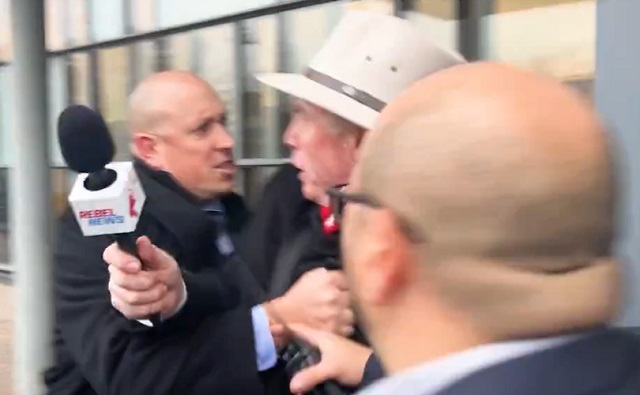
Rebel News reporter David Menzies is forcefully arrested
From LifeSiteNews
Authorities acknowledged that Rebel News’ David Menzies posed no threat while attempting to interview Deputy Prime Minister Chrystia Freeland before he was arrested by the Royal Canadian Mounted Police.
The Royal Canadian Mounted Police (RCMP) officer responsible for the aggressive arrest of Rebel News reporter David Menzies on Monday night is under investigation and the local city police involved in the incident has confirmed the journalist posed no threat to Deputy Prime Minister Chrystia Freeland.
As per a National Post report, the RCMP officer was placed under review after video of the altercation went viral.
According to RCMP spokesperson Sgt. Kim Chamberland, the “RCMP protective policing resources were involved in an incident while deployed on a protective operation.”
“The RCMP is looking into the incident and the actions of all parties involved,” Chamberland said.
Outrage exploded on social media this week after video footage seems to show the Canadian reporter being falsely accused of “assault” by a police officer and then immediately apprehended while he was attempting to ask Freeland questions on a public street.
In a video recorded and published Monday that has gone viral with close to 14 million views, Menzies is seen walking beside Freeland on a street in the Toronto suburb of Richmond Hill, Ontario, attempting to ask her questions about Iran’s Islamic Revolutionary Guard Corps and why the group has not been given a terrorist designation by Prime Minister Justin Trudeau’s Liberal government, of which she is second in command.
Seconds later, the video footage appears to show a plainclothes police officer, who is now confirmed to be a member of the RCMP, positioning his body directly in Menzies’ path, effectively forcing physical contact between himself and the reporter.
After the two lightly bump into each other — contact that the video seems to indicate was initiated by the officer and not Menzies — the officer begins to arrest Menzies in a rather aggressive manner while accusing the reporter of physically assaulting a police officer. Menzies, visibly shocked at the series of events, was then taken away by members of the York Regional Police, the local force operating in Richmond Hill.
Chamberland, as per the National Post, did not provide additional comments regarding the incident but did confirm that the RCMP review will involve all parties.
Menzies was released a short time after his arrest by police officers without being charged. He said that he had asked cops for their badge numbers, but they did not provide this information to him. This claim also appears to be backed up by the video, in which viewers can hear and see Menzies repeatedly ask for the name and badge number of the initial arresting officer.
He said during his arrest, “Welcome to Canada.”
“This is what they do to journalists. I was merely trying to scrum Minister Freeland and the RCMP officer blocked me, and evidently this is a trumped-up charge of assault, folks. I came here to do my job and now I’m handcuffed,” he added.
Rebel News reporter posed no ‘threat’ to Deputy PM Freeland, local police confirms
The York Regional Police (YRP) assisted the RCMP in arresting Menzies, but its media relations officer, Constable Lisa Moskaluk, claims that the arrest was made solely by the RCMP.
“The arrest of the Rebel News reporter was made by the Prime Minister’s RCMP security detail,” Moskaluk said.
“York Regional Police officers assisted as the interaction took place in our region.”
York police also confirmed that Menzies did not pose any “threat” to Freeland.
“It was determined that no credible security threat existed and the subject was released unconditionally shortly thereafter,” said Moskaluk, per the National Post.
Menzies’ arrest has drawn international attention. It was immediately condemned by many, including prominent Canadian politicians. Even Tesla billionaire Elon Musk chimed in with his thoughts on the incident as the video circulated online.
Conservative Party of Canada leader Pierre Poilievre reposted Rebel News’ original video of Menzies’ arrest, adding in his own words, “This is the state of freedom of the press. In Canada. In 2024. After 8 years of Trudeau.”
Rebel News head and founder Ezra Levant put the blame on Trudeau’s “thugs” for Menzies’ arrest, and said his team met with lawyer and planned to sue the RCMP, York Regional Police, and Freeland for false arrest.
Environment
Journalism Misrepresent Climate Science
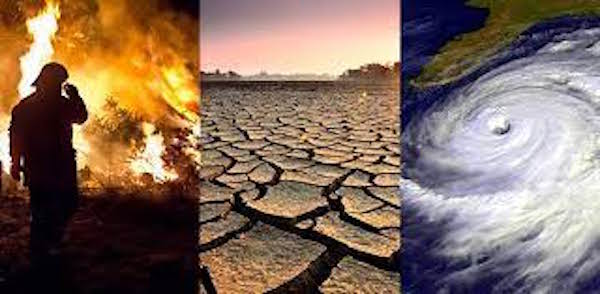
From EnergyNow.ca
By Jim Warren
So-called “climate realists” including , Bjørn Lomborg, have long held that climate activists and journalists exaggerate and misrepresent the threat presented by climate change.
In the latest edition of his book, False Alarm: How Climate Change Panic Costs Us Trillions, Hurts the Poor, and Fails to Fix the Planet, Lomborg muses, “Recently the media has [mis] informed us that humanity has just a decade left to rescue the planet, making 2030 the deadline to save civilization.”
This column proposes that the milieu of media hyperbole and fear that Lomborg describes has indeed contributed to the overly zealous climate change policy regime the federal government is imposing on western Canada’s agriculture and energy industries.
One of the clearest examples of media and activist misinterpretations of climate science involves the 2019 release of the Intergovernmental Panel on Climate Change (IPCC) Special Report on Climate Change and Land (SRCCL). The report’s release launched a flurry of wildly inaccurate mainstream media stories and social media posts that misrepresented its actual contents.
My initial interest in the report on land and climate change was influenced by the fact a colleague of mine at the University of Regina was one of the scholars selected by the IPCC to help produce it. And, given that the report would be addressing land use, food production and food security, I assumed it would likely have things to say that were relevant to agriculture in Saskatchewan.
Work on the SRCCL began in April of 2016. It was one of three special reports that would be incorporated into the IPCC’s Sixth Assessment Report, set for release in 2021. (The IPCC has been publishing Assessment Reports once every four to five years since 1988. They are its principal vehicle for presenting an overview of scientific assessments of climate change to the world.)
The mandate of the special report on climate and land was to explore the relationships between land use, land degradation, desertification, deforestation and climate change as well as the impacts of those relationships on global food security.
The executive summary for the report was released on August 8, 2019 at a news conference held in Geneva, Switzerland. I made a point of reading the summary the day it was released because I hoped to refer to it in an informed way the next time I met next with my colleague. (The IPCC refers the executive summary as the Summary of Policymakers).
By the evening of August 8, the distortion of reality was already underway. I encountered a number of the media stories describing the report that had little or nothing to do with the 107 findings and recommendations that appear in the Summary for Policymakers. Many of the stories led with the assertion that the report’s key message was the need to limit red meat consumption. According to my reading of the report this was patently incorrect—reducing red meat consumption was not a central theme of the report.
The journalists responsible for some of the stories were mistaken, or worse yet, making up things. As it happened, a number of climate scientists also recognized the disconnect between what the media were saying about the report and what the report actually said. In August 2021, the academic journal, Climate Change, published an article by Oxford University academic Mary Sanford and three co-authors about the controversy surrounding the way traditional media and activists on Twitter had characterized the report.
Sanford and her co-authors report that “five UK-based media organizations whose websites are amongst the most used and trusted led their coverage on the SRCCL with a focus on eating less meat in their headlines.”
The offending UK media outlets included the BBC, The Telegraph, The Mail, The Times and The Independent. Sanford’s group gave special mention to “The BBC’s article on 8 August headline ‘Plant-based diet can fight climate change – UN’.” The global reach of inaccurate coverage was bolstered by the London-based Reuters news agency which “led one of its main articles on the SRCCL with the headline ‘U.N. flags need to cut meat to curb land use impact on global warming’.”
In the U.S., articles in Time magazine, the Wall Street Journal and Vox all led with comments critical of the climate effects of meat eating or other negative aspects of the meat industry.
The headline for the August 8 CBC story on the report read, “Farming and eating need to change to curb global warming.” Although, in the body of the story itself dietary change doesn’t come up until the third paragraph and meat consumption is not specifically mentioned.
Some traditional media organizations did better. Fox News, The New York Times, and The Washington Post ran articles that addressed the report’s principal themes such as the bidirectional effects of land use practices on the climate and the impact of a changing climate on the sustainability of land use practices and the global food supply. Some like CNN provided reasonably accurate coverage in their initial August 8 reports but in subsequent days gave dietary change greater attention.
Contrary what many of the media reports suggested, several of the findings and recommendations in the Summary for Policymakers actually recognize the importance of well-managed livestock grazing to sustainable food production and biodiversity. One of the findings indicates that grazing lands provide habitat for a far greater range of plants and animals than annual field-crop agriculture. Another finding notes the carbon sink value of grassland. One of the findings regarding diet notes the important role animal protein plays in the food system. Another point recommends diversity in diets and the beneficial role played by public health dietary guidelines. At the same time the report does acknowledge that ruminant livestock (cattle, bison, sheep and goats) produce methane emissions that contribute to the greenhouse effect. But according to the report that fact does not mean we need to cease raising ruminants for food.
One needs to dive much deeper into the 910 page report than the executive summary to find any discussion about the effects of meat consumption on the climate or the food supply. In Chapter 5 the report surmises that if everyone on the planet ate as much beef as the average resident of the UK, 95% of the world’s agricultural land would be required to support meat production. And, it mentions there is academic literature which recommends reducing the consumption of animal food products while increasing the proportion of plant-based food in diets.
Chapter 5 also has a paragraph that suggests red meat consumption could potentially be reduced with the development of plant-based meat substitutes. And, in case you were wondering where Prime Minister, Justin Trudeau and the environment and climate change minister, Steven Guilbeault, get some of their more novel ideas, there is indeed a sentence in the report that suggests we might be able to make greater use of insects for food. Yep, you read that right. Buried in Chapter 5, a single sentence on insect eating is presented as a sort of blue sky idea that might help reduce red meat consumption.
It is safe to say consumption of red meat was not a significant theme in the report and eating meat was not categorically condemned. The report supports well-managed sustainable livestock grazing and recognizes the dietary importance of red meat.
As one might expect, news reports focusing on diet and meat consumption were condemned by agricultural organizations such as the UK’s National Farmers’ Union. The tenor of the news stories was also a cause of alarm for the IPCC. I met with my colleague the week of the report’s release and asked her if the IPCC was aware of the distortions in the media coverage. She said that they were and acknowledged it was a problem since the media’s focus on diet and red meat detracted from their efforts to have the actual findings of the report publicized.
No less important than identifying the inaccuracies in the news stories about the SRCCL is understanding how and why the reporting was so bad. There are a number of possibilities. One is that many journalists were simply too busy or too lazy to actually read the Summary for Policymakers before writing their stories. We might also suspect many relied on their personal world-views and preconceived ideas about what they thought they should say. Worse yet they might have actually read the report and intentionally misrepresented its contents. A good follow up question might be what are the origins of journalists’ established views on climate change and meat consumption?
Sanford and her co-authors make an effort to get at these questions and propose that many journalists’ mindsets are influenced by social media. They suggest the January 2019 release of a report published by the EAT-Lancet Commission was still fresh in many journalists’ minds when they wrote about the SRCCL in August that same year. The EAT-Lancet report was produced by 37 scientists in association with the medical journal, The Lancet, and promoted itself as “the first full scientific report of what constitutes a healthy diet from a sustainable food system that can support and speed up food system transformation.” (By way of comparison the SRCCL report was generated by 330 scientists and social scientists – more than 1,500 scientists contribute to the IPCC Assessment Reports).
The EAT-Lancet report does indeed recommend a reduction in global meat consumption. It is noteworthy that it does not advocate for the end of meat and dairy consumption but does support vegetarianism and veganism.
The EAT-Lancet report states: “The planetary health diet is a global reference diet for adults that is symbolically represented by half a plate of fruits, vegetables and nuts. The other half consists of primarily whole grains, plant proteins (beans, lentils, pulses), unsaturated plant oils, modest amounts of meat and dairy, and some added sugars and starchy vegetables. The diet is quite flexible and allows for adaptation to dietary needs, personal preferences and cultural traditions. Vegetarian and vegan diets are two healthy options within the planetary health diet but are personal choices.”
According to Sanford and her co-authors, the publication of the EAT-Lancet report coincided with growing interest in veganism and the popularization of “reports associating meat eating and livestock farming with a range of negative impacts, particularly on GHG (methane) emissions.”
By the time the IPCC released its SRCCL report the EAT-Lancet report had generated over eight million Twitter posts. While the reaction on Twitter was divided between supporters and opponents of vegetarianism, the participation of anti-livestock vegan and vegetarian activists was clearly influencing the discussion. Sanford and company propose that views critical of meat consumption were likely shaping the attitudes of journalists.
A number of studies have described the symbiotic relationship that exists between journalists and Twitter. Journalists use Twitter to post comments and links to their own stories. They also use it to inform the news stories that they write. Furthermore, journalists constitute the largest user category on Twitter, accounting for 26% of the platform’s verified accounts. Journalists and news organizations are frequent tweeters. A 2022 article in Editor and Publisher, an online publication, states that 70% of journalists claim Twitter is the first or second social media site they use most frequently in their jobs. They make posts about the content they produce and have more followers than any other verified user groups on Twitter.
In 2018, an article in the Columbia Journalism Review expressed alarm over the reliance journalists were placing on Twitter as a source for their work. Especially worrisome was the fact some journalists claimed to place more reliance on anonymous tweets than information provided by The Associated Press. The quality of journalism is bound to suffer if reporters rely on the claims of activists with agendas that don’t include dissemination of unvarnished objective evidence. The danger is that this can produce a cycle of garbage in garbage out journalism.
We can reasonably assume that at least some journalists writing articles in the week following the release of the SRCCL were influencing the discussion on Twitter and were in turn influenced by it. However, the data presented by the Sanford group also suggests that journalist-Twitter cross fertilization was occurring in only two corners of the Twitterverse.
It is hardly surprising that the research shows when it comes to issues related to the IPCC and climate change, social media posts reflect the culture wars occurring in wider society. Social media posts about climate change occur within two polarized echo chambers. There is the activist group who embrace the idea that climate change is a real and urgent problem threatening life on the planet. Some members of the activist faction claim climate change is the greatest threat facing humanity and nature. And, then there is the skeptic faction that includes those who claim the science on climate change is uncertain and the dangers are frequently exaggerated. And, it’s true some members of the skeptic group assume human caused climate change is a hoax.
Social scientists often feel the need to invent jargon to describe social phenomena. One of the concepts they use to explain the climate divide on Twitter is “homophily,” the tendency for people to be attracted to and seek out others who are similar to themselves – and share their opinions. Added to this is “confirmation bias,” the tendency of people to accept new information when it confirms their pre-existing beliefs and reject ideas that contradict those beliefs.
Sanford and her co-authors systematically parsed over 6,000 Twitter posts related to the SRCCL. They show that most of the discussion on Twitter was indeed contested by the usual suspects. There was a skeptic camp who criticized the IPCC “for in their view slandering the meat and dairy industries, and trying to take away their right to eat meat.” And there was an activist group, which included vegans and vegetarians who criticized meat eaters for contributing to climate change.
Given the actual content of the Special Report on Climate and Land, the content of the Twitter war makes absolutely no sense. The skeptics were incensed over things the report never actually said and the activists defended it for things it didn’t actually say. Particularly troubling for people who hope for objective unbiased reporting is that journalists tended to side with the inaccurate assessments being made by the activist camp. As we’ve seen, many of them wrote stories that identified diet and meat eating as the focus of the report. Both vegan activists and sympathetic journalists would have come closer to “their own truth” had the news stories criticized the IPCC for failing to pay enough attention to diet and meat eating.
It is disturbing to learn objective reality had such a minimal impact on the Twitter debate or the journalists writing inaccurate stories. It was a case of homophily and confirmation bias on steroids. People simply chose sides based on their usual positions regardless of actual facts and evidence. It was wearing the team colours that really counted.
For people who rely on agriculture or jobs in the energy sector for their livelihoods the current quality of media articles and discussions on social media in relation to climate change is not very comforting. In Canada, the problems may well be exacerbated by the federal government’s subsidization of traditional media organizations. The agendas of strident environmental activists and the federal government’s climate policies often coincide. Given the incestuous relationship between journalists and environmental activists on Twitter it is perhaps understandable that traditional media, environmental activists and the federal government often sing from the same hymn book. For people who practice healthy skepticism, the fact our federal government is subsidizing the news media is grounds for suspicion about the veracity of Canadian journalism.
Unfortunately coming up with effective strategies for combating widely-held misconceptions about climate change in traditional and social media is a daunting challenge. The problem is unlikely to be remedied any time soon.
Jim Warren is an Adjunct Professor and Lecturer in environmental sociology at the University of Regina.
Censorship Industrial Complex
Australian politicians attack Elon Musk for refusing to remove video of Orthodox bishop’s stabbing
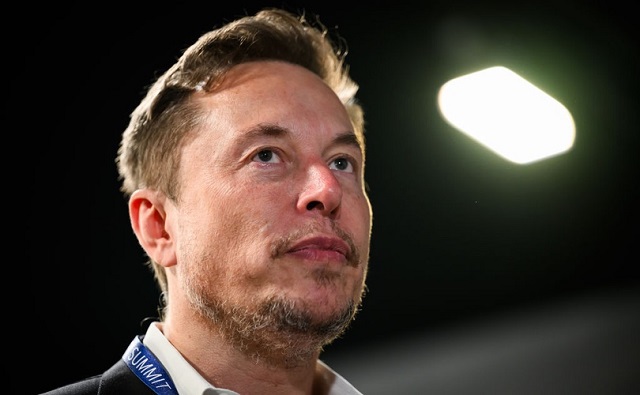
Photo by Leon Neal/Getty Images
From LifeSiteNews
By David James
The video is available on YouTube but Australia’s political class is singling out and waging war on X owner Elon Musk for his refusal to delete footage of the stabbing of Orthodox Bishop Mar Mari Emmanuel.
In a demonstration of governmental overreach the Australian prime minister, Anthony Albanese, has attacked Elon Musk, the owner of X (formerly Twitter) for not acceding to demands to put a worldwide ban on video footage of an attempted stabbing of a bishop in a Sydney church.
Albanese is not alone; virtually the entire Australian political class has joined in the attack. Tanya Plibersek, minister for Environment and Water called Musk an “egotistical billionaire.” Greens senator Sarah Hanson-Young described him as a “narcissistic cowboy.” Albanese chimed in by describing him as an “arrogant billionaire who thinks he’s above the law.”
Senator Jacqui Lambie went as far as suggesting that Musk be “jailed” for his refusal to bend to the demands of the Australian government.
In response to Lambie’s comments, Musk declared her to be an “enemy of the people of Australia,” agreeing with another social media user who suggested it should be Lambie, not Musk, who belongs in jail.
This Australian Senator should be in jail for censoring free speech on X. https://t.co/vnYvBjpXav
— Rothmus 🏴 (@Rothmus) April 23, 2024
The right wing Liberal-National coalition was only slightly less aggressive saying Musk was offering an “insulting and offensive argument” in his refusal to remove graphic footage of the stabbing. How Musk saying that posts should not be taken down is “insulting and offensive” was not explained.
The victim of the attack, Bishop Mar Mari Emmanuel, an Iraqi-born Assyrian Australian prelate who is head of the Eastern Christ the Good Shepherd Church, has displayed a maturity and moral virtue conspicuously lacking in the political arena. Emmanuel recorded a message saying that he loved his assailant, and that he wanted the video to stay online, urging people not to respond to violence with violence.
After the incident there were riots outside the church, resulting in 51 officers sustaining injuries. A 16-year-old boy has been arrested and charged with a religiously motivated terrorist attack.
The court battle between the Australian government and Musk is being characterised as a contest between free speech and the government’s role in protecting people. Certainly for Musk it is very much about protecting free speech.
That formulation is inaccurate. There is no effective protection of free speech in Australia, unlike the US, which has the First Amendment of the Constitution. The Federal government is currently preparing a misinformation and disinformation bill to force social media companies only to allow content of which the government approves.
As Senator Ralph Babet of the United Australia Party observes it is a “censorship agenda” that will be pushed no matter which party is in power. “The office of the eSafety commissioner was created under the Liberal Party and is now being emboldened by the Labor Party,” he writes.
The public battle with Musk is better seen as an attempt by the Australian government to control what is on the internet. The newly appointed eSafety commissioner, Julie Inman-Grant directed X to remove the posts, but X had only blocked them from access in Australia pending a legal challenge. The government then demanded that the posts be removed world-wide.
That the Australian political class thinks it has the right to issue edicts in countries where it has no legal jurisdiction is a demonstration of the lack of clarity in their thinking, and the intensity of their obsession with censoring.
Musk accurately characterised the situation in a post: “Should the eSafety Commissar (an unelected official) in Australia have authority over all countries on Earth?” It seems that many Australian politicians think the answer to that question is “Yes.”
The childish personal attacks on Musk, typical ad hominem attacks (going at the person rather than the argument) are revealing. What does the fact that Musk is a billionaire have to do with the legal status of the posts? Does having a lot of money somehow disqualify him from having a position?
If he is “egotistical” or “arrogant” what does that have to do with his logical or legal claims? How does exposing Musk as a narcissistic cowboy” have any relevance to him allowing content on the platform? Wouldn’t a narcissist be more likely to restrict content? The suspicion is that the politicians are resorting to such abuse because they have no argument.
The Australian government’s attack on Musk, which borders on the absurd, is just one of many being directed at X. An especially dangerous initiative is coming from the European Union’s Digital Services Act, which can apply fines of up to 6 per cent of the worldwide annual turnover, a ridiculously punitive amount. The United Kingdom’s communications regulator, Ofcom is even worse. It will have powers to fine companies up to 10 per cent of their global turnover.
Western governments are mounting an all out push to censor the internet, and Australia’s aggressive move is just part of that. What is never considered by governments and bureaucrats is the cost of such censorship.
The benefits of “protecting” people are always overstated and inevitably infantilize the population. The price is a degradation of social institutions and a legal system that does not apply equally to the citizenry and to the government. It is a step towards tyranny: rule by law rather than rule of law.
-

 Alberta2 days ago
Alberta2 days agoAlberta threatens to fight Trudeau government restrictions on Canada’s plastics industry
-
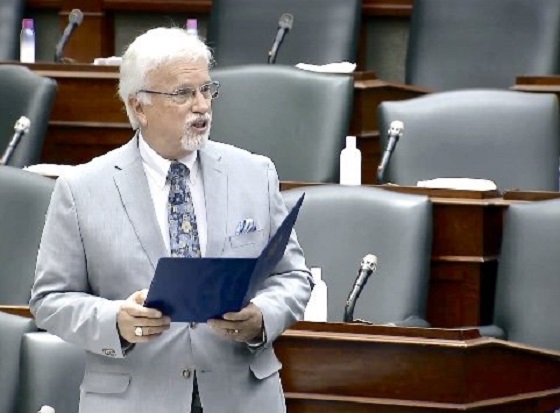
 COVID-192 days ago
COVID-192 days agoFormer Canadian lawmaker has no regrets about refusing COVID shot despite losing his job
-

 COVID-192 days ago
COVID-192 days agoPeckford: Hallelujah! Supreme Court of Canada to hear Newfoundland and Labrador charter case
-

 Uncategorized1 day ago
Uncategorized1 day agoMaking Alberta a geothermal energy leader
-

 Alberta1 day ago
Alberta1 day agoAlberta’s vision for passenger rail
-

 Alberta1 day ago
Alberta1 day agoThree Calgary massage parlours linked to human trafficking investigation
-

 Alberta2 days ago
Alberta2 days agoCanada’s postal service refuses to help with Trudeau’s gun ban buyback program: report
-
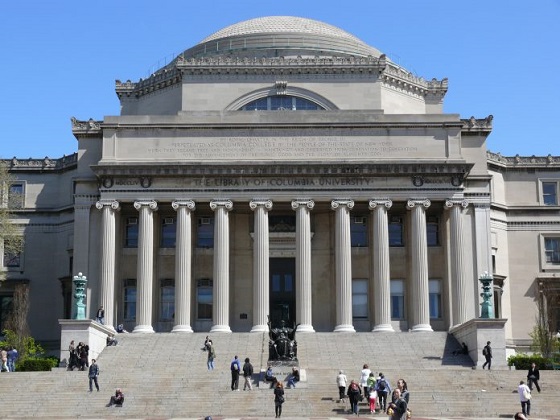
 conflict13 hours ago
conflict13 hours agoColumbia on Lockdown After pro-Palestinian Protesters Take Over Building, Hold Janitors Hostage








